| Help |
Jump to: Brand | Flavor | Volume
| Country Made For / Country Made In | Description / Differences with Main Can
| Year of Issue | Material | Code
| Barcode | Top | Theme | Series
Other Help Topics (These will be updated in the near future):
The Can Museum Philosopy |
How to Add a New Can |
How to Clean Rusty Cans |
Taking Photos of Cans |
Cancyclopedia (Definitions of can-related words)
|
|
| Brand back to the top |
The Brand is typically displayed as the largest name on the can. Sometimes, however, the brand is the Parent Company as in the case of
Microbrews like Brewdog Brewing Company and Special Parent Companies like Boston America Corp..
Examples of typical Brands
Examples of Microbrews
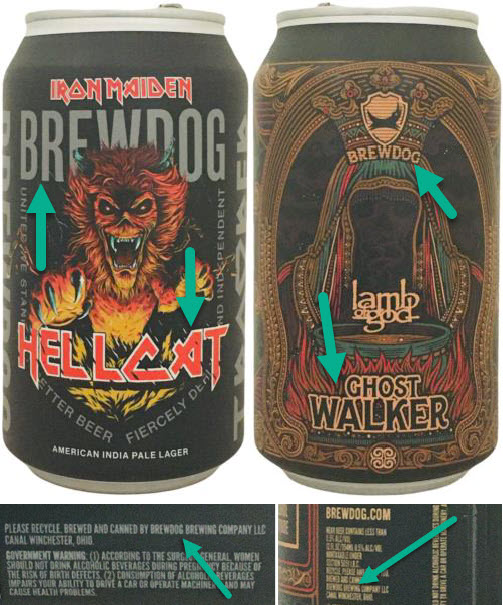
This Microbrew brand is Brewdog Brewing Company. While Hellcat and Ghost Walker can be considered brand names, we find it better to group these together by the Microbrew name and add the names Hellcat or Ghost Walker to the Description.
|
Examples of Special Parent Companies
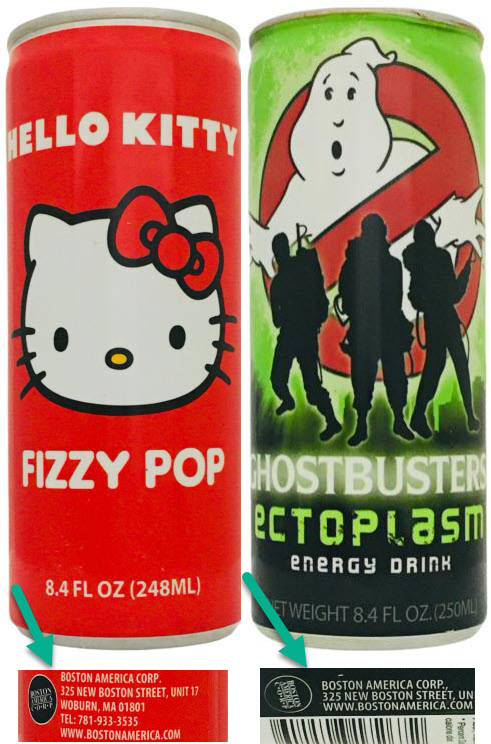
This Special Parent Company brand is Boston America Corp.. While Hello Kitty and Ghostbusters can be considered brand names, we find it better to group these together by the Parent Company name and add the names Hello Kitty or Ghostbusters to the Description.
|
If you do not see the Brand you need in the Brand drop down, go to the Add a New Can menu item and select Suggest a New Brand. Fill out the Suggestion form and the Can Museum Admins will review your suggestion. Please allow up to 48 hours for your suggestion to be added. If there is an issue with your suggestion you will be notified by email.
|
|
| Flavor back to the top |
We are certain that everyone is clear what a Flavor is. What you need to understand is what format flavors are in to select from in the flavors drop down.
- Flavors begin with a main flavor.
For example: Beer, Cider, Cola, Tea
- After the main flavor, there is a more specific flavor.
For example: blueberry, grape, kiwi, strawberry
- Diet drinks have "diet" at the end.
For example: Cola (diet), Ginger ale (diet), Orange soda (diet), Soda water -lemon (diet)
- Groupings of main flavors have a dash (-) after them or the word "with" before a more specific flavor.
For example: Cider -grape, Lemon-lime with cranberry
- Multiple flavors of equal value are separated by a forward slash (/).
For example: Orange/grapefruit soda
- Beer flavors typically start with or contain the following:
Beer, Malt, Shandy
- Energy flavors typically start with or contain the word:
Energy
- Alcoholic drinks begin with Alc.
For example: Alc. berry cocktail
If you do not see the Flavor you need in the Flavor drop down, go to the Add a New Can menu item and select Suggest a New Flavor. Fill out the Suggestion form and the Can Museum Admins will review your suggestion. Please allow up to 48 hours for your suggestion to be added. If there is an issue with your suggestion you will be notified by email.
|
|
| Volume back to the top |
You may have noticed that at the Can Museum, we only keep track of Volume in mililiters (mL).
We did this for 2 reasons:
- mL is the most common format for measuring volume in the world.
- It is easier to stay consistent across all cans with one format for volume.
But don't worry if your can doesn't show mL because we have a link to a Google Volume Conversion Tool on the Can Add and Can Update pages that will help convert the Volume on your can to mL.
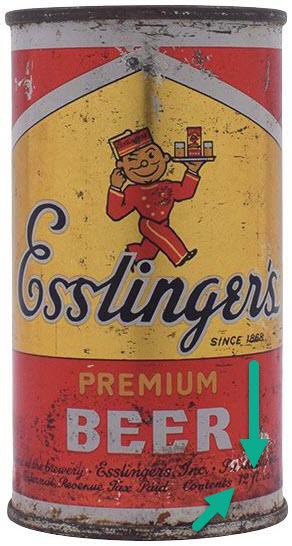
This can only shows fl oz, not mL
Here's how to use it:
When you are Adding or Updating a can...
- On the forms, next to the "Volume" drop down, click on Help me convert volume to mL.
- A new browser tab will open to Google and you will see Volume preselected. Below the text box, select the unit of measure as printed on your can.
For example: US fluid ounce for fl oz
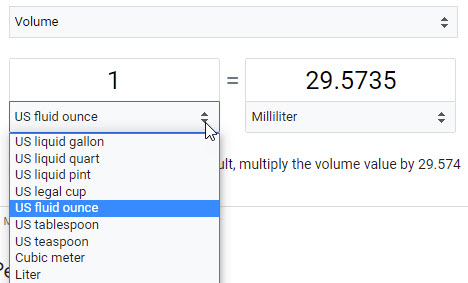
- Just above the unit of measure, enter the volume amount from your can.
For example: 12
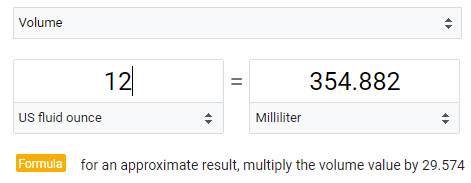
- You will see the conversion of your volume to mililiters update on the right side above Mililiter.
In this example, we got: 354.882
- Now, round the number.
In this example we would round to 355
Rounding rule example:
If your mL value starts with:
354.0, 354.1, 354.2, 354.3 or 354.4
round down to 354mL
If your mL value starts with:
354.5, 354.6, 354.7, 354.8, or 354.9
round up to 355mL
- Finally select the volume from the Volume drop down.
If you do not see the Volume you need in the Volume drop down, go to the Add a New Can menu item and select Suggest a New Volume. Fill out the Suggestion form and the Can Museum Admins will review your suggestion. Please allow up to 48 hours for your suggestion to be added. If there is an issue with your suggestion you will be notified by email.
|
|
| Country Made For / Country Made In back to the top |
Country Made For and Country Made In are typically the same. However there are some companies that make beverages that are imported or
sold across multiple neighboring countries. In these cases there will be text on the can that states this.
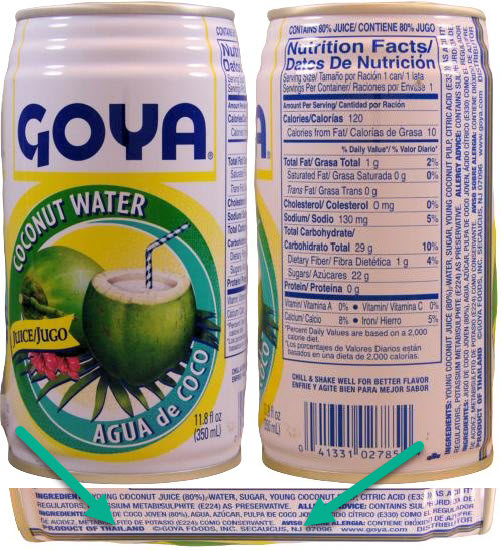
In this example for Goya Coconut Water, it reads, Product of Thailand and the copyright and distributor reads Secaucus, NJ (United States).
This means the Country Made For is United States and Country Made In is Thailand
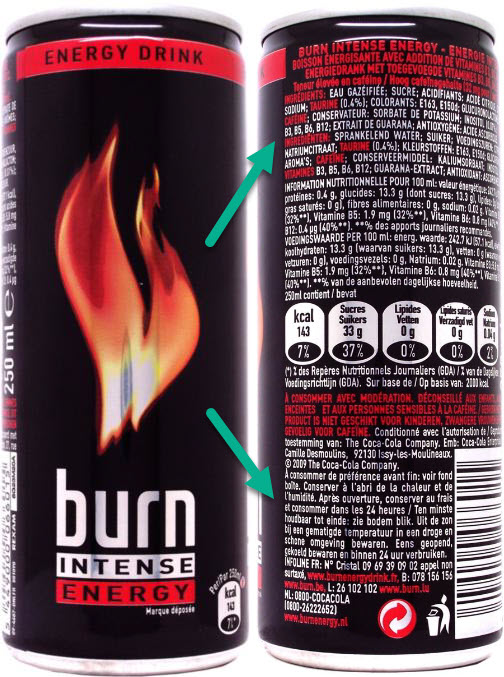
In this example for Burn Intense Energy, the text reads
the Country Made For is Benelux (Belgium, Netherlands, Luxembourg) and Country Made In is France
|
|
| Description / Differences with Main Can back to the top |
The Description shouldn't be too wordy, but should contain words that describe important unique text or features of the can.
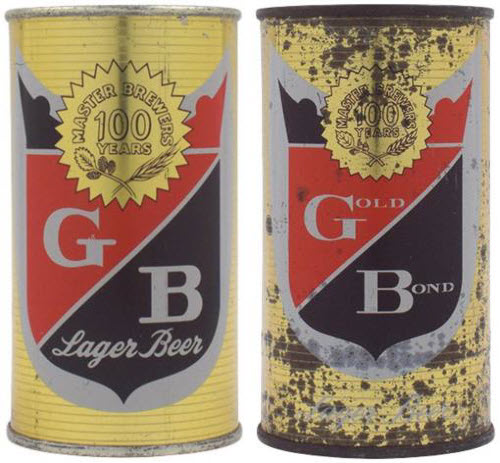
In this example, both are different Gold Bond Lager cans. The first can would have a Description
of MASTER BREWERS 100 YEARS - G B ONLY
and the second can would have a Description of MASTER BREWERS 100 YEARS - LARGE G AND B
If the can is a Variation (same design, but minor differences), the Differences with Main Can should describe those differences.
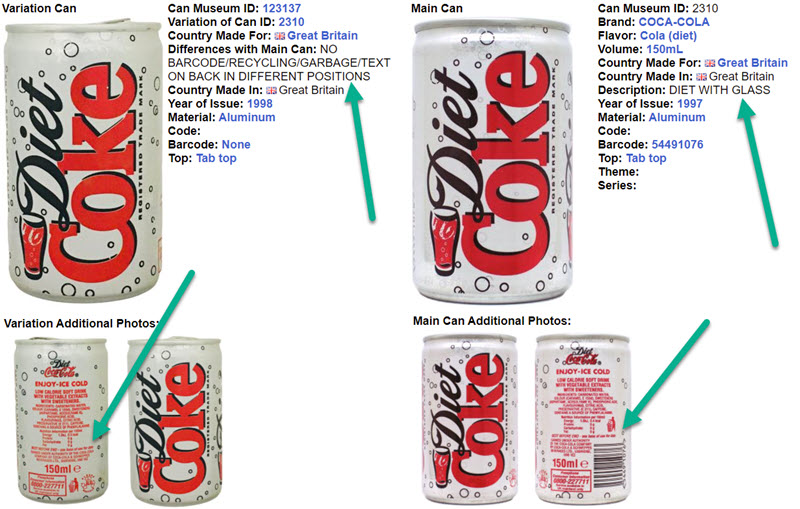
In this example, both cans are 150mL Diet Coke Great Britain cans. From the front the design is identical, however on the back there are clear differences making this a variation.
The Main Can has a Description of DIET WITH GLASS and the Variation has Differences with Main Can as NO BARCODE/RECYCLING/GARBAGE/TEXT ON BACK IN DIFFERENT POSITIONS.
|
|
| Year of Issue back to the top |
Year of Issue can be the easiest or most difficult piece of data to select for a can.
These are some ways to know the correct date:
Some other Year of Issue tips:
- I.R.T.P. or Internal Revenue Tax Paid = March 1960 or earlier
- All Aluminum = 1963 - 1967 start to today (early exceptions: 1959 7oz. Coors, 1954 Primo 11 oz.)
- Steel = January 24, 1935 (Krueger) - mid 1960s. Plus in some countries through today.
- Barcode = Late 1970s to today. Coca-Cola and Pepsi started using Barcodes on some cans in 1978.
If you absolutely have no idea what year the can is from you can select a decade from the Year of Issue drop down. The decades are represented with 195? for 1950s or 197? for 1970s
|
|
| Material back to the top |
Material is definitely easy to identify for a can.
Material Types:
- Aluminum - Most metal cans from mid 1960s to today.
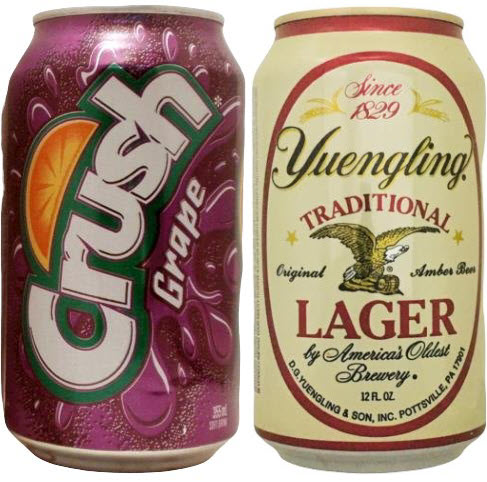
- Cardboard - Paper-based, non-metal. Seen in wines and coffees. Not common
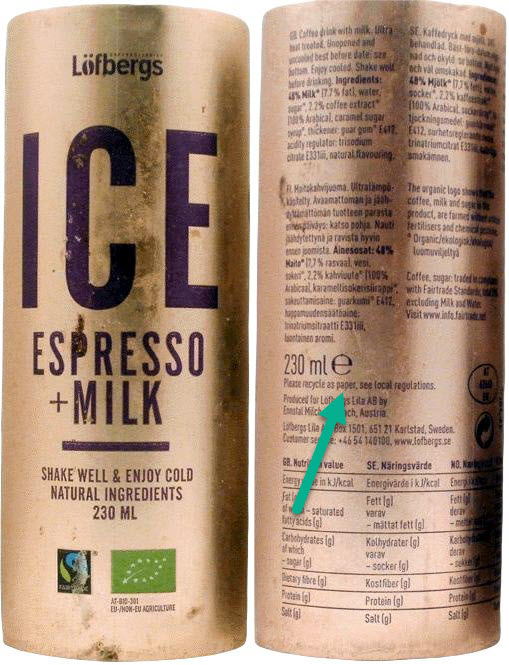
- Plastic - Sometimes transparent with an aluminum lid. Not common.
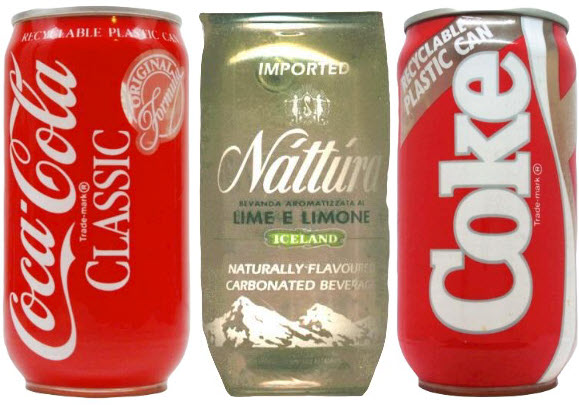
- Steel - Most metal cans from the first can in January 24, 1935 (Krueger) - mid 1960s. Plus in some countries through today.
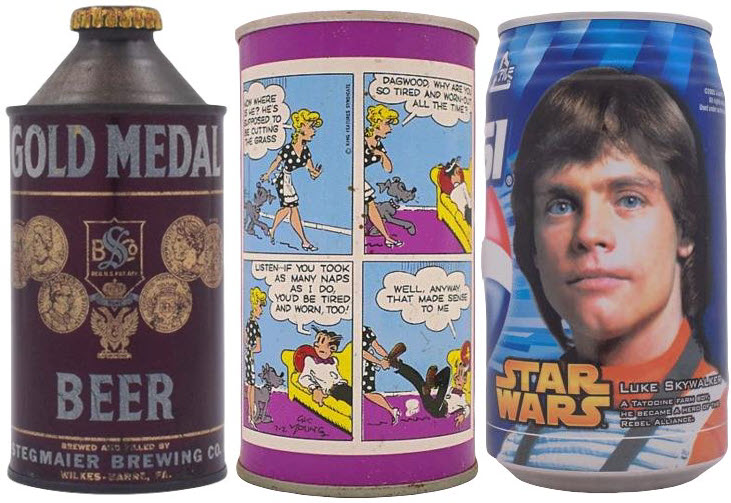
The dead giveaway is that Steel is a MAGNETIC metal while Aluminum is not.
|
|
| Code back to the top |
A Code can be found on some cans from around 1988 to today.
It represents a unique can design and sometimes includes the year in the Code.
The Code is usually very close to the Barcode.
Code Examples:

Not all cans have a Code. If there is no Code, leave this field blank.
|
|
| Barcode back to the top |
A Barcode can be found on cans from the late 1970's to today. The first item, a 10-pack of Wrigley's Juicy Fuit gum, with a Barcode was scanned in
Troy's Marsh Supermarket in Troy, Ohio, USA on June 26, 1974 at 8:01 AM by Sharon Buchanan. It became popular in grocery stores in the 1980s.
Coca-Cola and Pepsi started using Barcodes on some cans in 1978.
Barcode Examples:
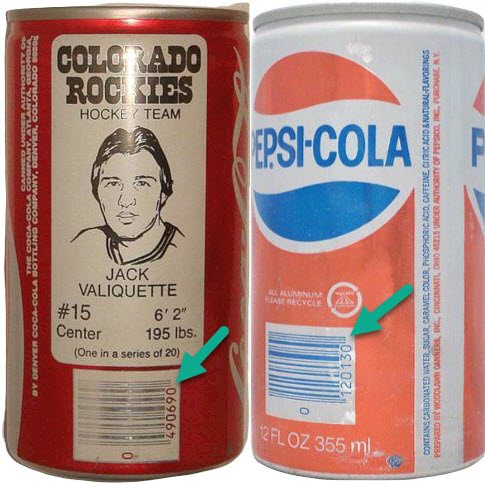
When entering these numbers be sure to include all numbers together as one long number even though a number may be separated on either side of the Barcode.
In the photo above, the Coca-Cola can on the left has a Barcode of 0490690 and
the Pepsi can on the right has a Barcode of 0120130
Not all cans have a Barcode. If there is no Barcode, please type None in this field. This will help group cans without a Barcode together.
|
|
| Top back to the top |
Tops are easy to identify for a can if you are familiar with some examples.
Top Types:
- 360 End (2013 - Today) - The entire lid can be removed. Trademarked by Crown Holdings, Inc. First use in 2013 with Sly Fox's Helles and Sly Fox's 360 IPA.
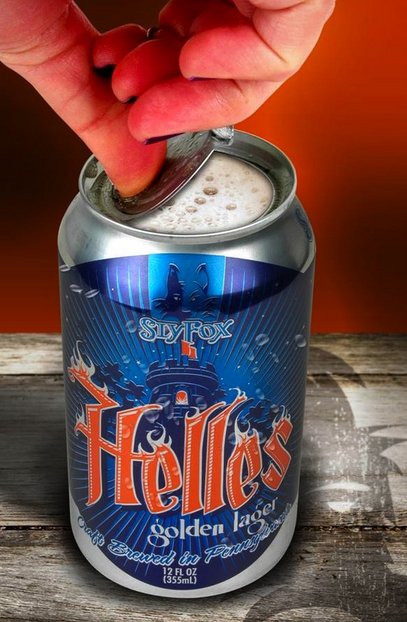
Photo: Crown Holdings, Inc.
|
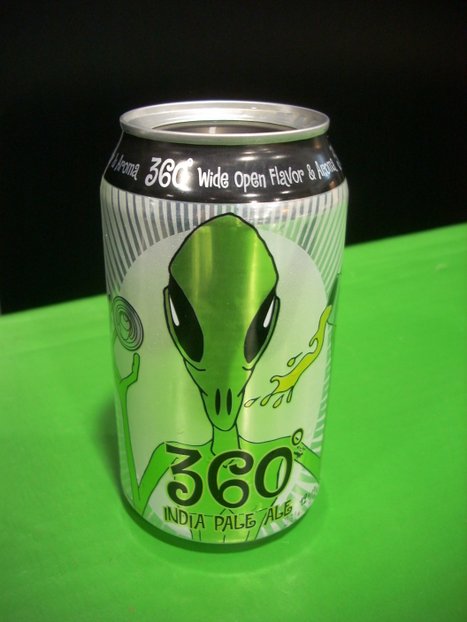
Photo: Craft Brewing Business
|
- Bank top - Has a slot for coins on the top with no easy way to get the coins out. These cans did not contain any liquid but were given away or sold as souvenirs.
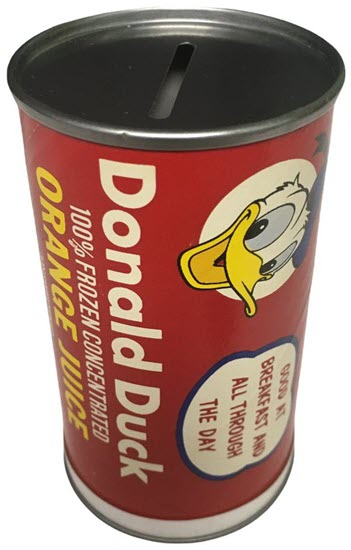
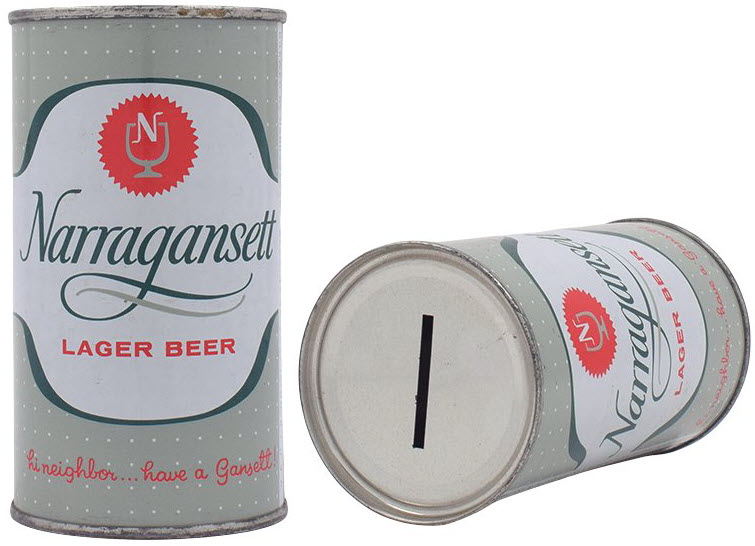
Photo: Morean Auctions
- Button top (1970's) - Created to replace the pull tab but didn't catch on. There were two hinged devices that opened into the can. One was small and the other larger one was to drink out of. It failed because it was too difficult for many to press the button and left sharp edges of which
many cut their fingers due to the amount of force required to press the buttons.
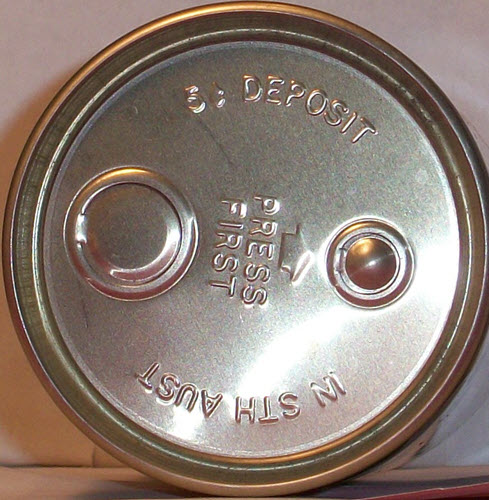
Photo: Core77
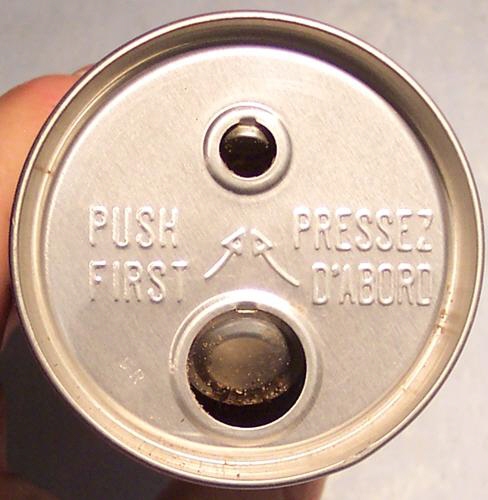
Photo: Core77
- Cone top (1935 - Early 1960's) - This can had a spout on top and was sealed with a bottle cap. Most were produced in the 1930's and 1940's.
Types of Cone Tops include: J-Spouts, Low Profile, High Profile, and Crowntainers. Cone tops helped convert bottle drinkers to can drinkers, however,
longer production times than flat tops and the inability to stack cans eventually led to it's demise.
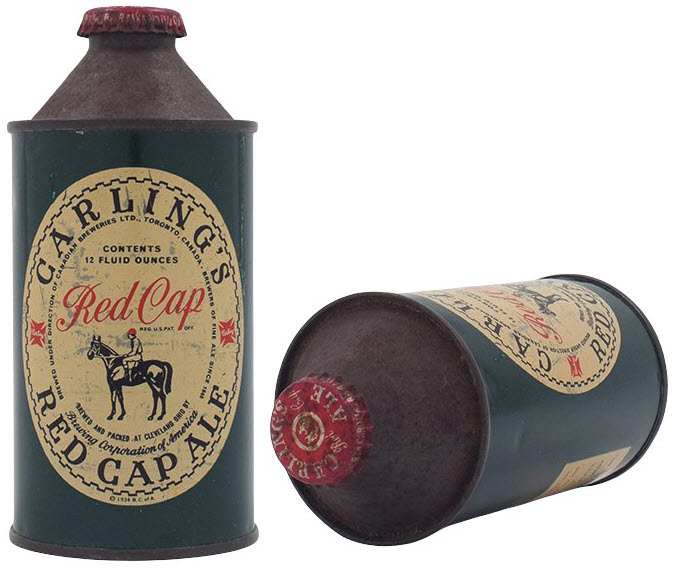
Photo: Morean Auctions
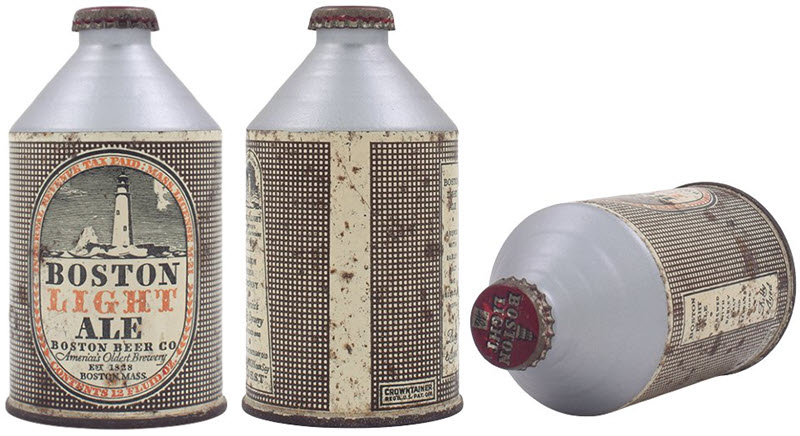
Photo: Morean Auctions
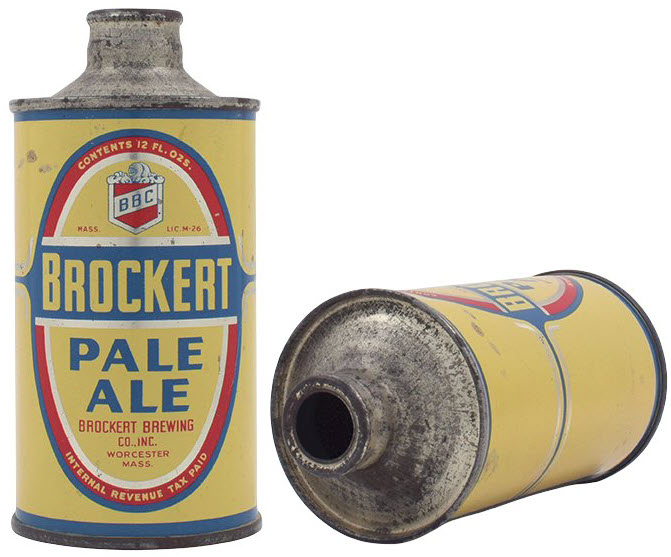
Photo: Morean Auctions
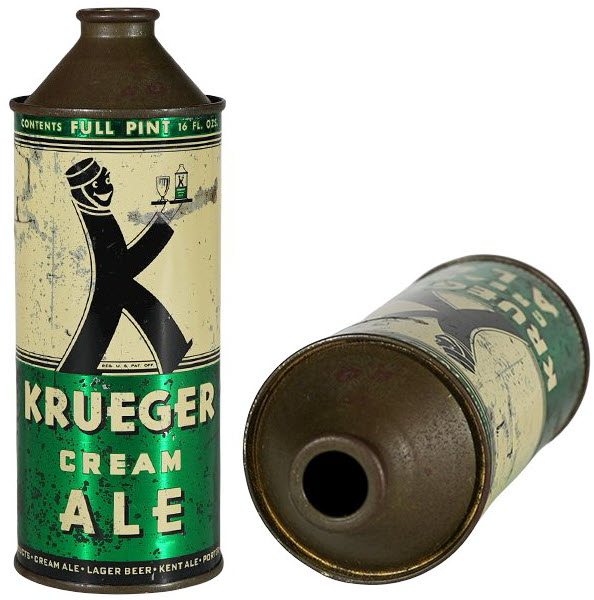
Photo: Morean Auctions
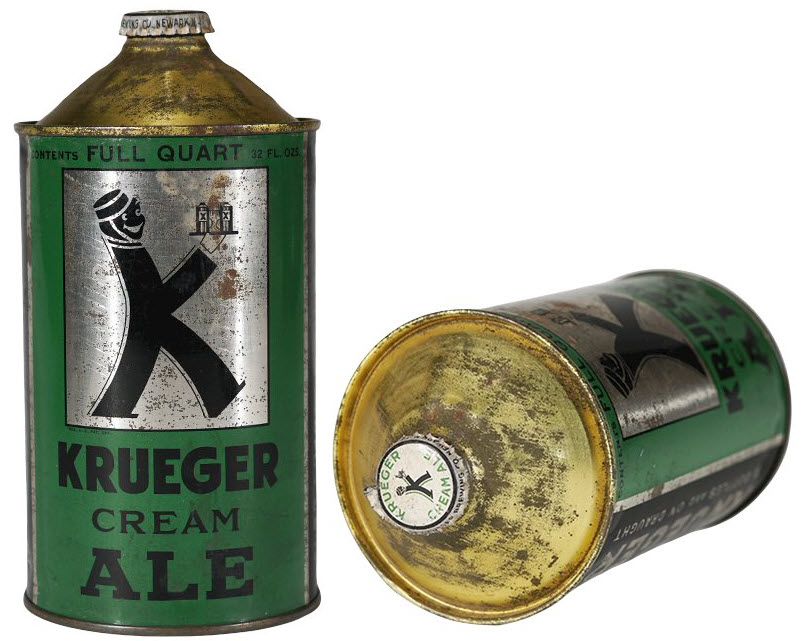
Photo: Morean Auctions
- Crown Cap top (2000's - Today) - These are cans that are made of aluminum or steel and almost are identical to a bottle including a bottle cap, also called a crown cap (like Cone Top cans).
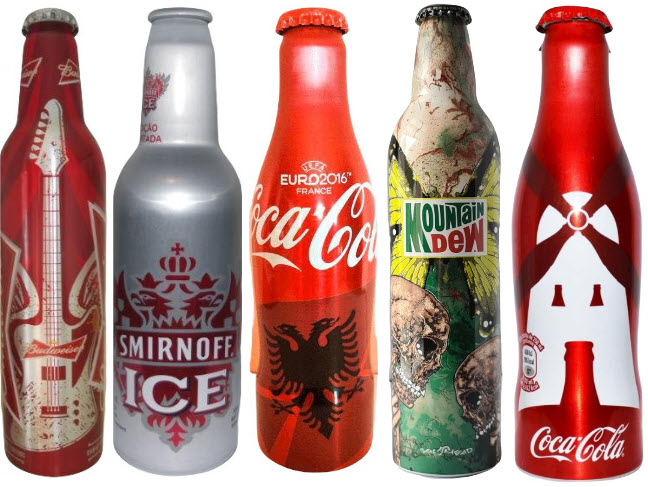
- Flat top (1935 - Early 1960's) - Cans made from a single sheet of metal and sealed in one of many different methods. The top and bottoms are inset without a tab. This can requires a Church Key to open.
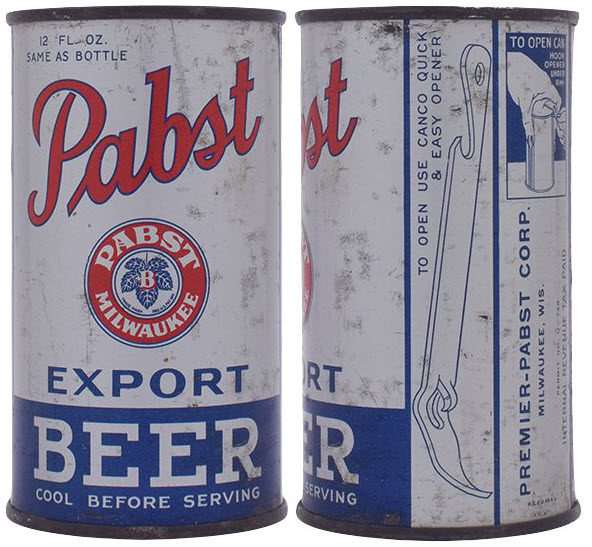
Photo: Morean Auctions
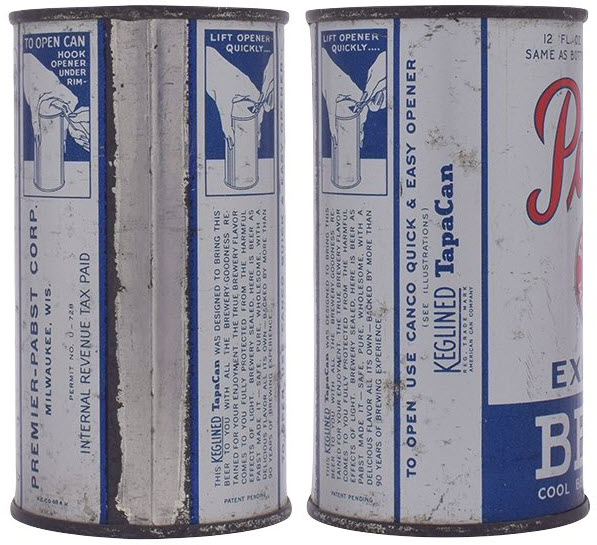
Photo: Morean Auctions
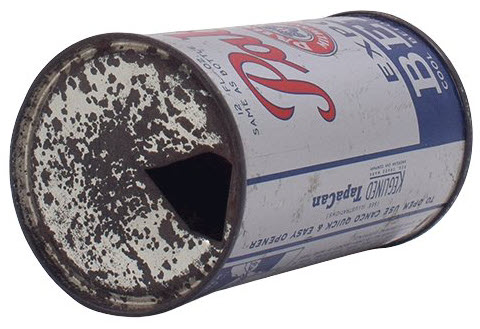
Photo: Morean Auctions
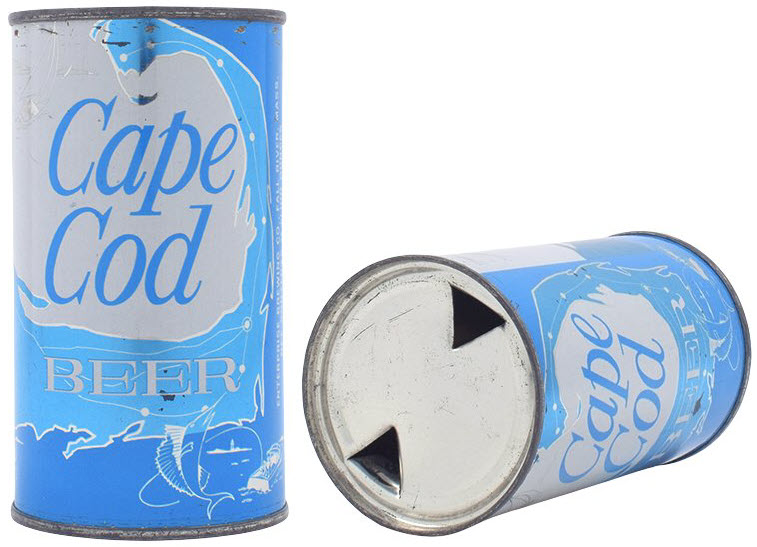
Photo: Morean Auctions
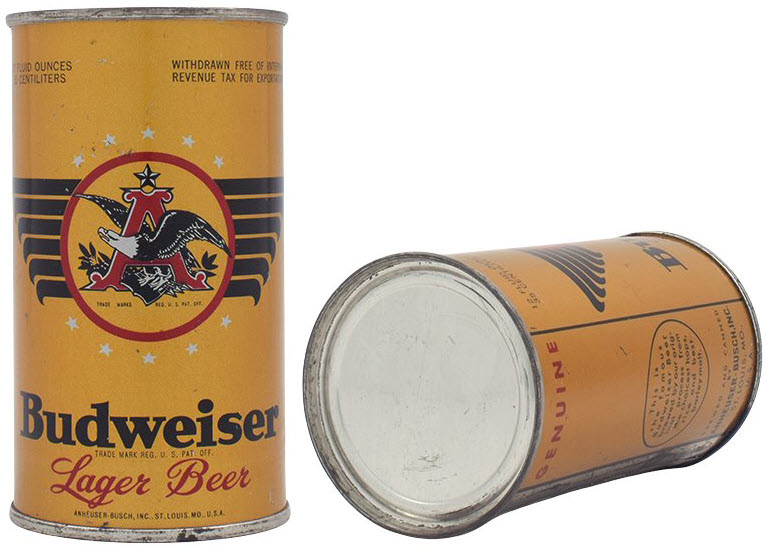
Photo: Morean Auctions
- Gallon top (1970's - Today) - This top applies to any gallon can which typically has some sort of tap on top to be installed, a button, or nothing at all.
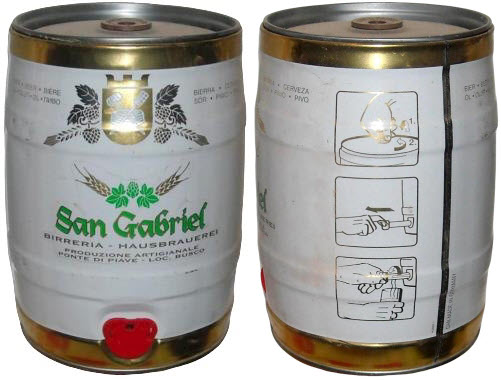
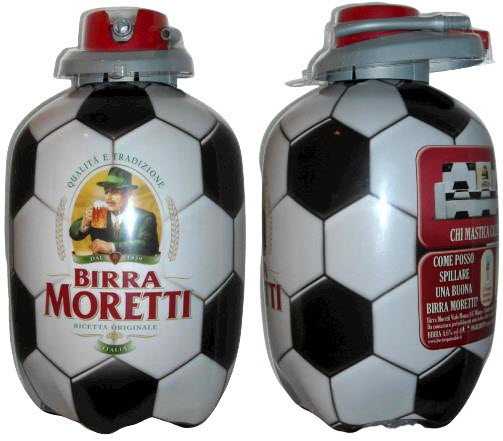
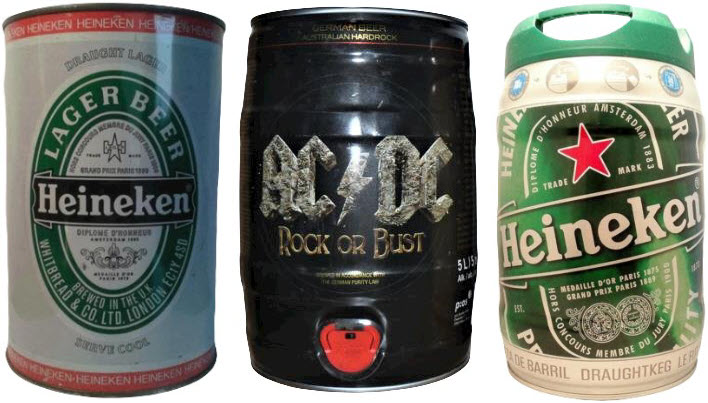
- Juice top (1965 - Today) - The Juice top is usually a thin piece of foil than can be completely pulled off and thrown away. This design appears on top of most juice cans and has been on some smaller soda cans.
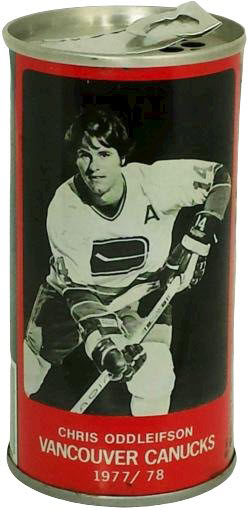
- Pull top (1965 - Late 1970's) - This top has a metal ring to grab and is completely pulled off and thrown away. It left a traingular opening with a narrow end opposite a wider end resembling a tear or a fan blade. Due to litter of these pull tops, they were replaced with stay-on tabs.
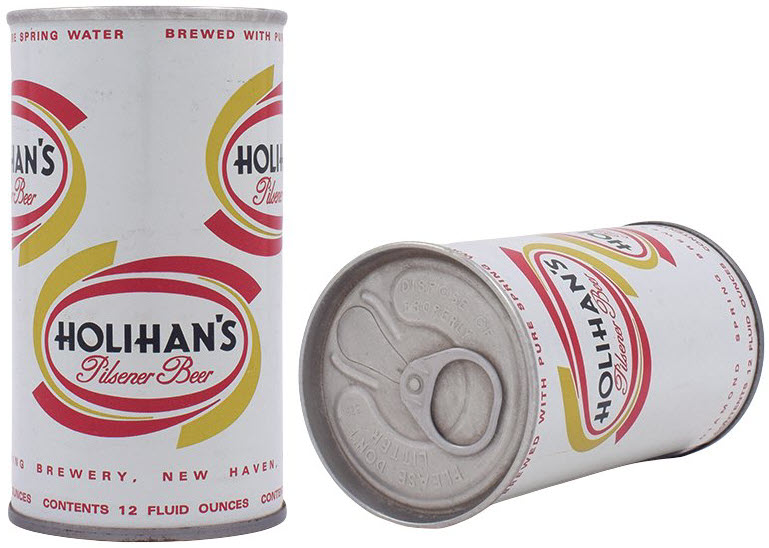
Photo: Morean Auctions
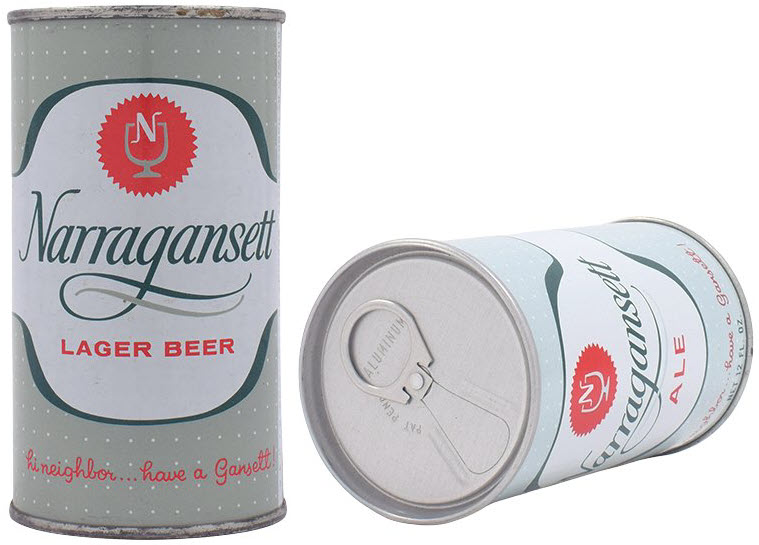
Photo: Morean Auctions
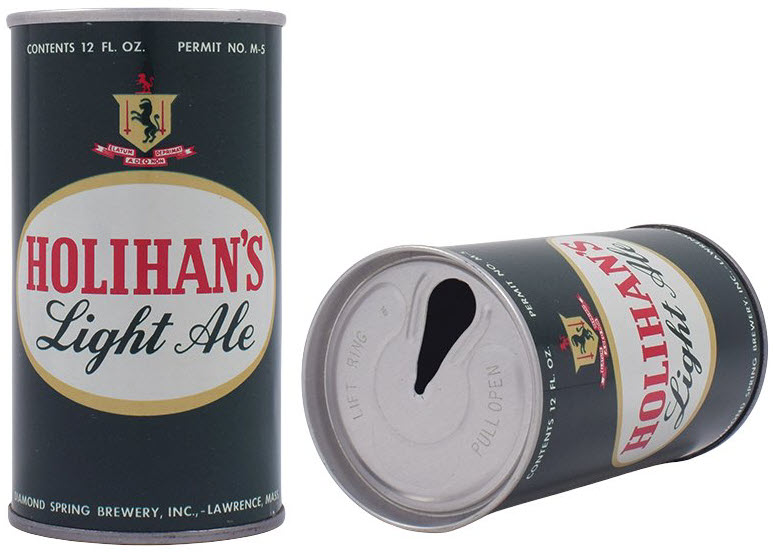
Photo: Morean Auctions
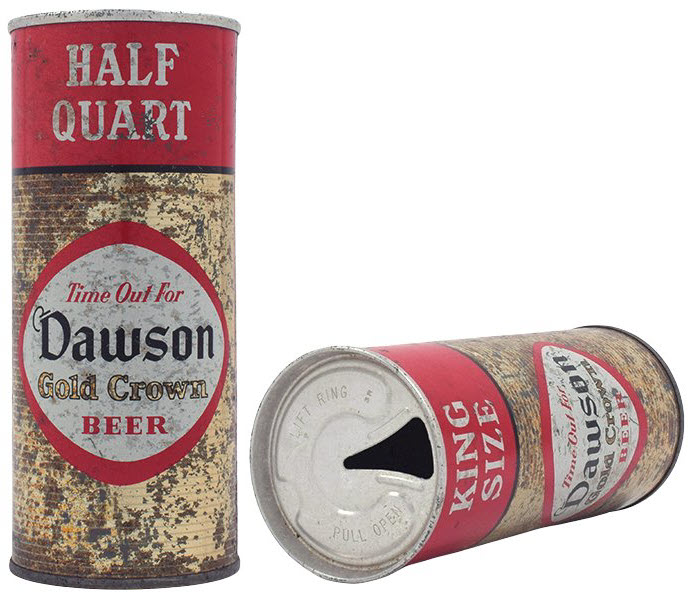
Photo: Morean Auctions
- Resealable top (1982, 2000 - Today) - There are many designs of Resealable tops. Coca-cola test marketed a "Clicker" top in 1982 and then released a different design in 2009.
We have also seen different plastic sliding designs from 2000's to today in Mountain Dew Game Fuel, Monster Energy, Burn, No Fear, and other energy drinks and some beers, waters and isotonics.
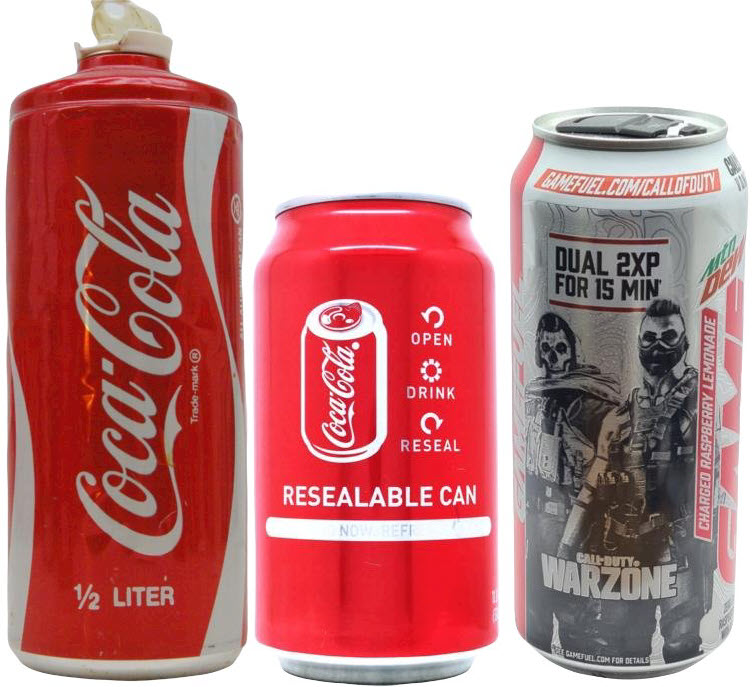
- Screw top (2000's - Today) - The screw top is very much like the tops of plastic bottles we see today. It can be screwed on and off. There is also a wider screw cap used by brands like Jumex, Monster, Rockstar and others.
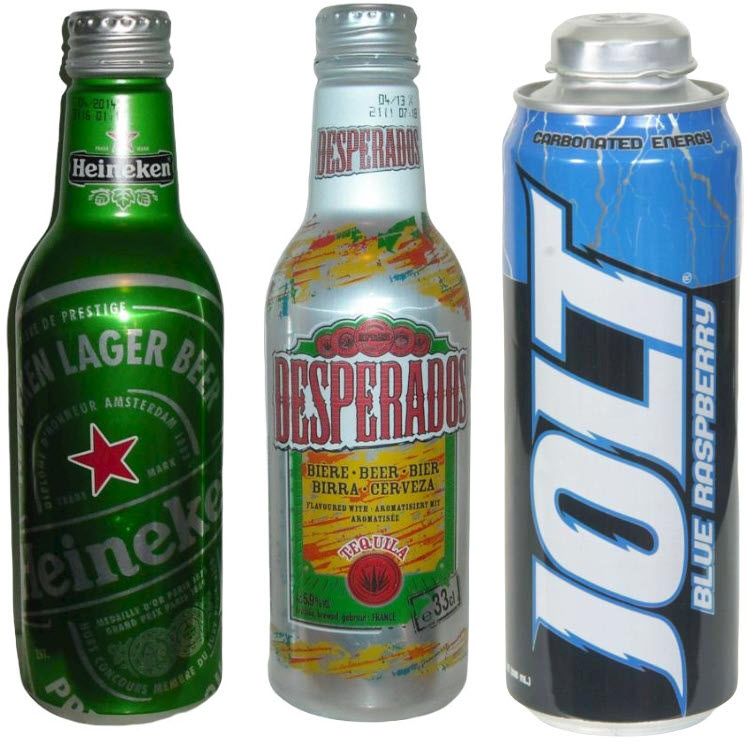
- Space top (1985) - The Space Top cans consist of two completely different designs by Coca-Cola and Pepsi during the "Cola Wars" of the 1980's. Both were designed to to allow astronauts to be able to drink Coke and Pepsi in zero-gravity space aboard the Space Shuttle Challenger (July 30 - August 6, 1985).
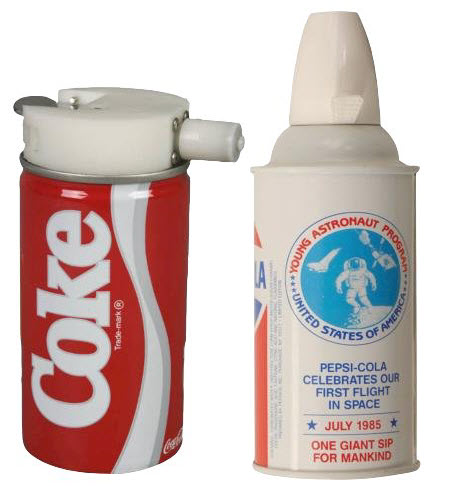
- Swing top (1980's, 1990's) - Swing tops have been used for years with glass bottles to keep a strong seal to preserve freshness and carbonation.
We have only seen this top design at the Can Museum by a parent company called Engel-Brauerei Schwäbisch Gmünd from Germany in aluminum steel cans resembling bottles in the the 1980's and the 1990's
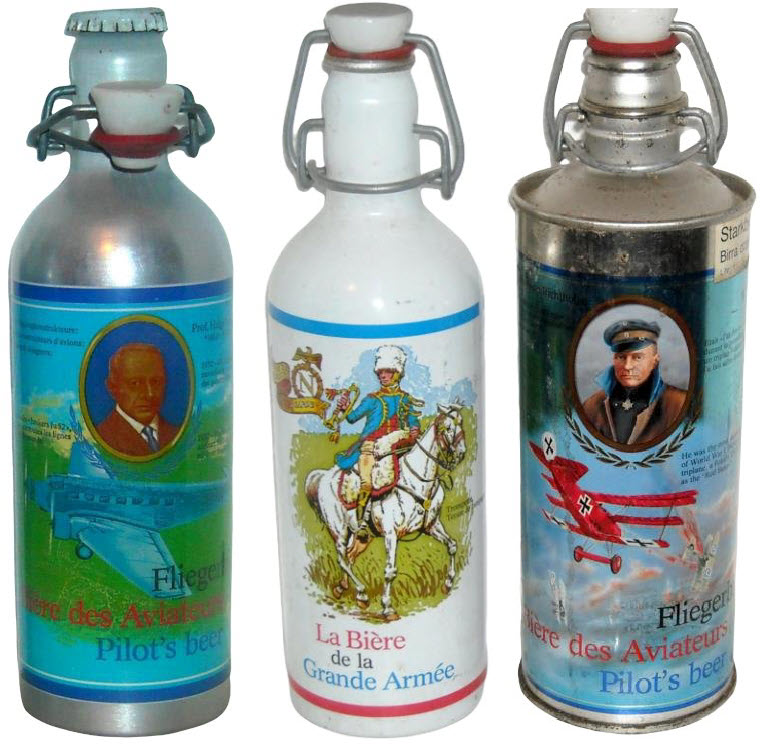
- Tab top (1975 - Today) - This top is the current standard in beverage cans. It was originally called the "Sta-tab" and was invented by Danial F. Cudzik in 1975. The tab is lifted up breaking the seal of an oval opening in order to drink or pour the contents of the can. The tab can be pushed back down and stays in place.
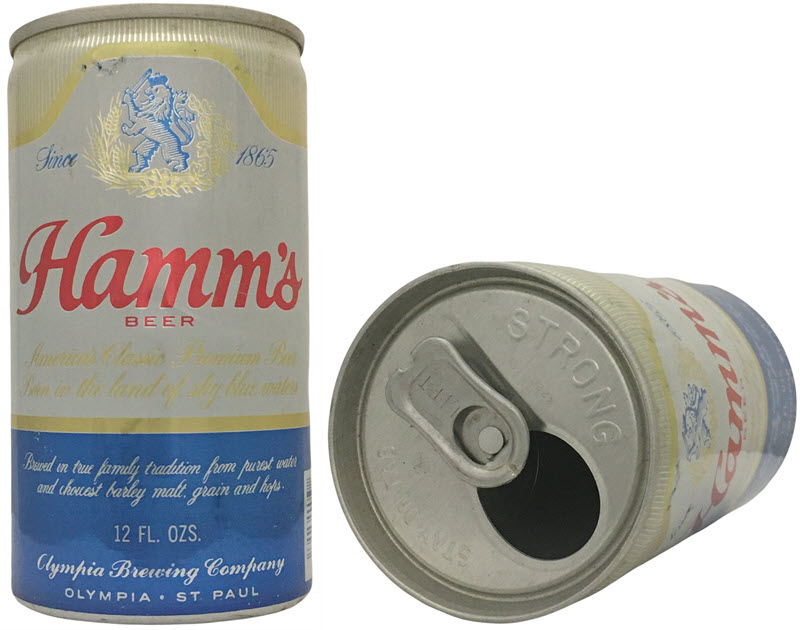
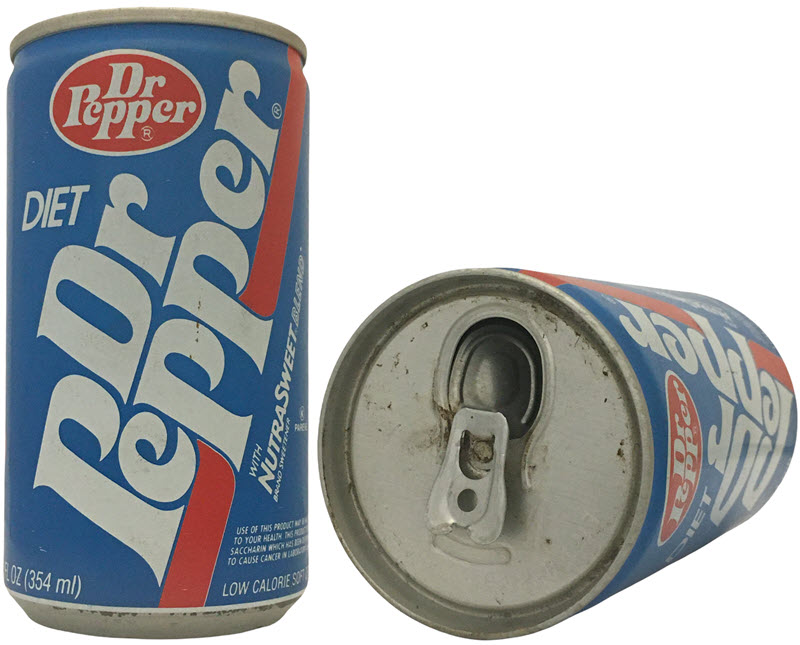
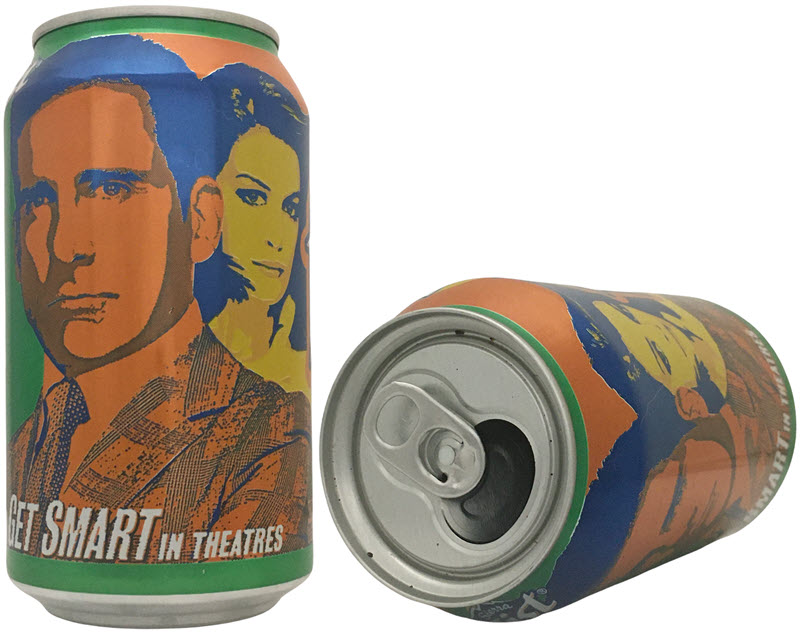
- Zip top (1962 - 1965) - The first Zip top can was Iron City Beer, followed by Schlitz. There was a tab to grab, lift and pull completely off. If the opening wasn't scored enough the hole couldn't be opened and a Church Key still needed to be used. There were also issues with the opening leaving sharp edges that cut the lips, tongue and noses of consumers.
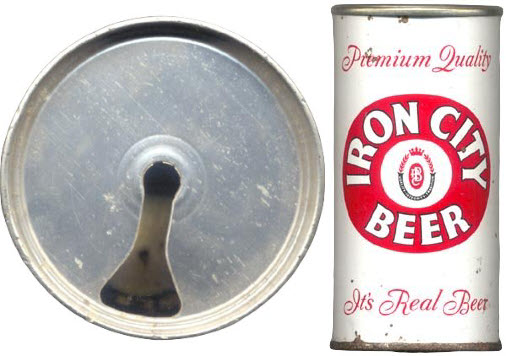
Photo: RustyCans.com
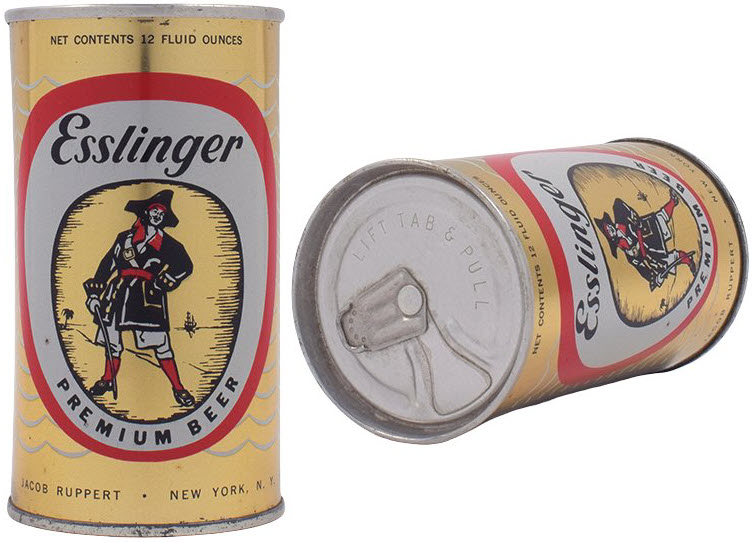
Photo: Morean Auctions
|
|
| Theme back to the top |
A Theme is used in the Can Museum to group cans together that have a similar subject.
Theme Examples:
Halloween
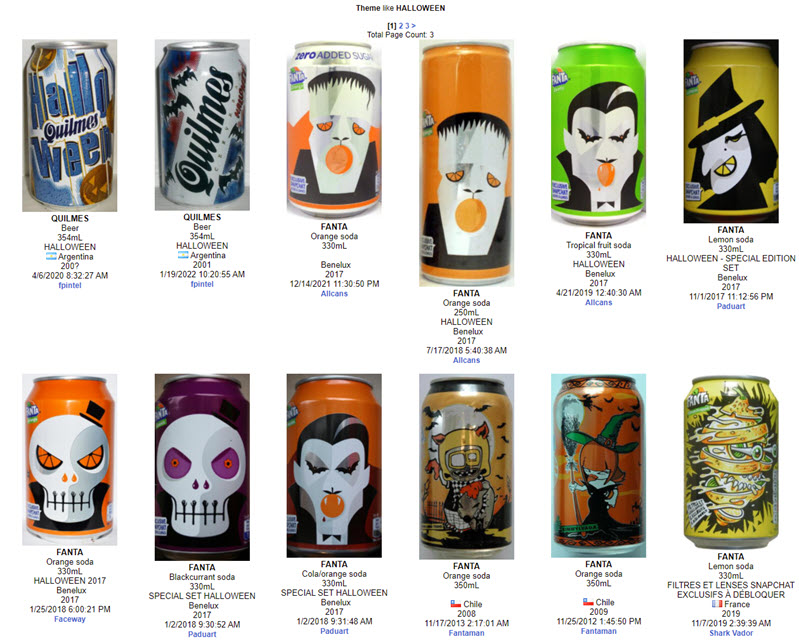
Music
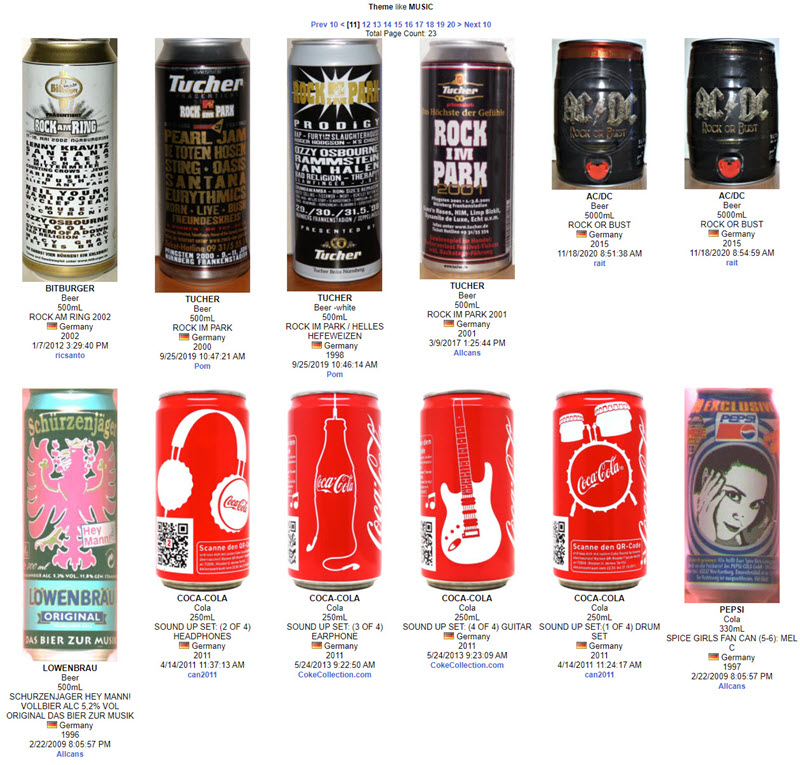
Movie / TV-Series
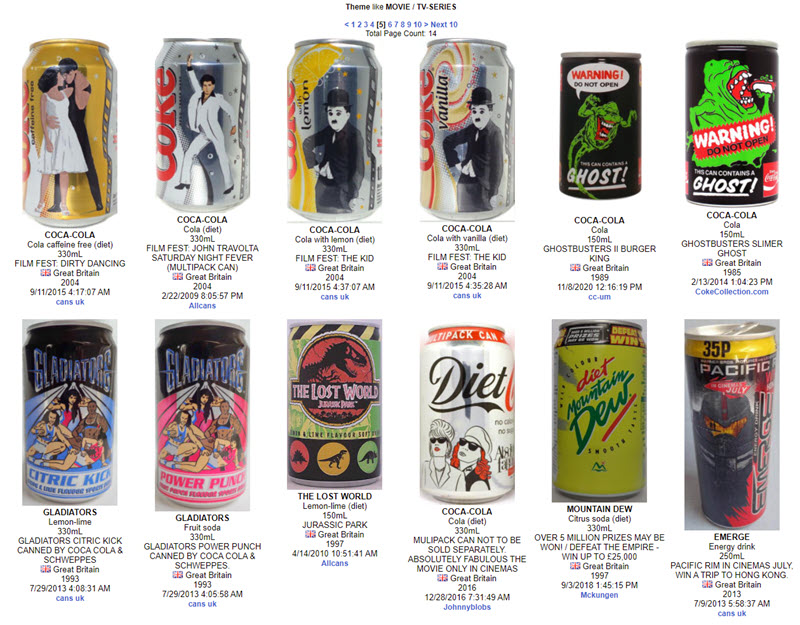
Not all cans have a Theme. If there is no Theme, leave this field blank.
If you do not see the Theme you need in the Theme drop down, go to the Add a New Can menu item and select Suggest a New Theme. Fill out the Suggestion form and the Can Museum Admins will review your suggestion. Please allow up to 48 hours for your suggestion to be added. If there is an issue with your suggestion you will be notified by email.
|
|
| Series back to the top |
A Series is used in the Can Museum to group cans together that belong to a set.
Series Examples:
Disney - Mickey's Toowntown
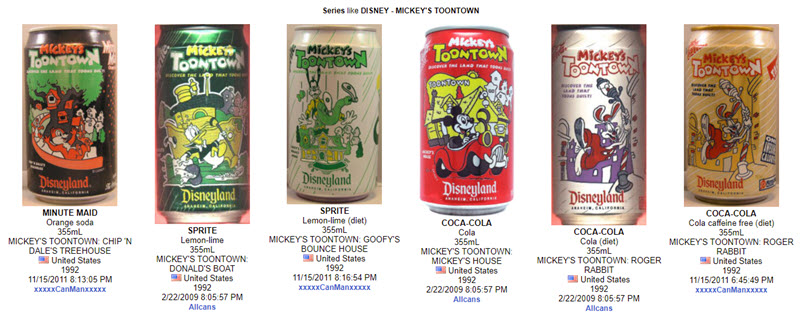
Scooby-Doo
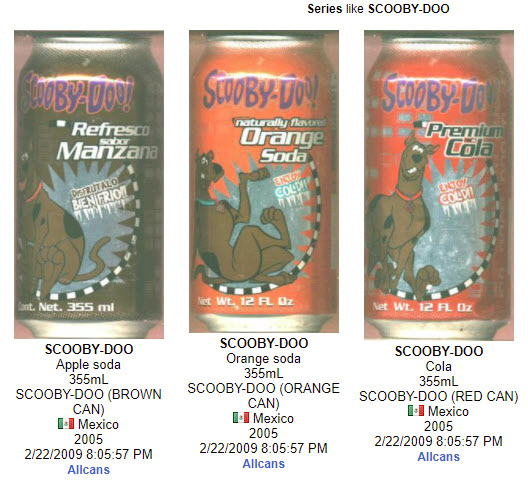
Rolling Stone - Celebrating 60 Years of Rock
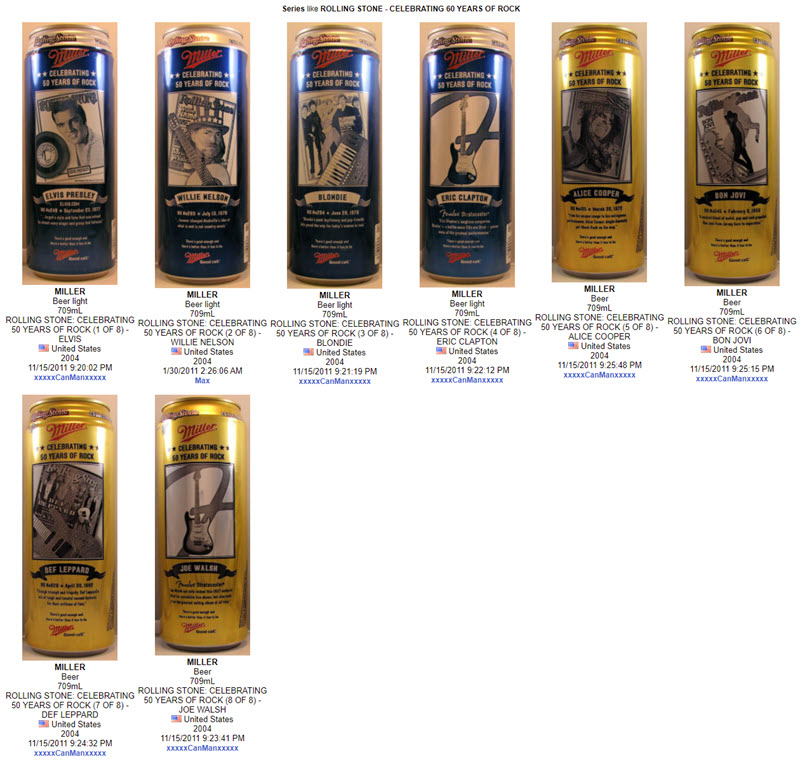
Not all cans belong to a Series. If there is no Series, leave this field blank.
If you do not see the Series you need in the Series drop down, go to the Add a New Can menu item and select Suggest a New Series. Fill out the Suggestion form and the Can Museum Admins will review your suggestion. Please allow up to 48 hours for your suggestion to be added. If there is an issue with your suggestion you will be notified by email.
|
|